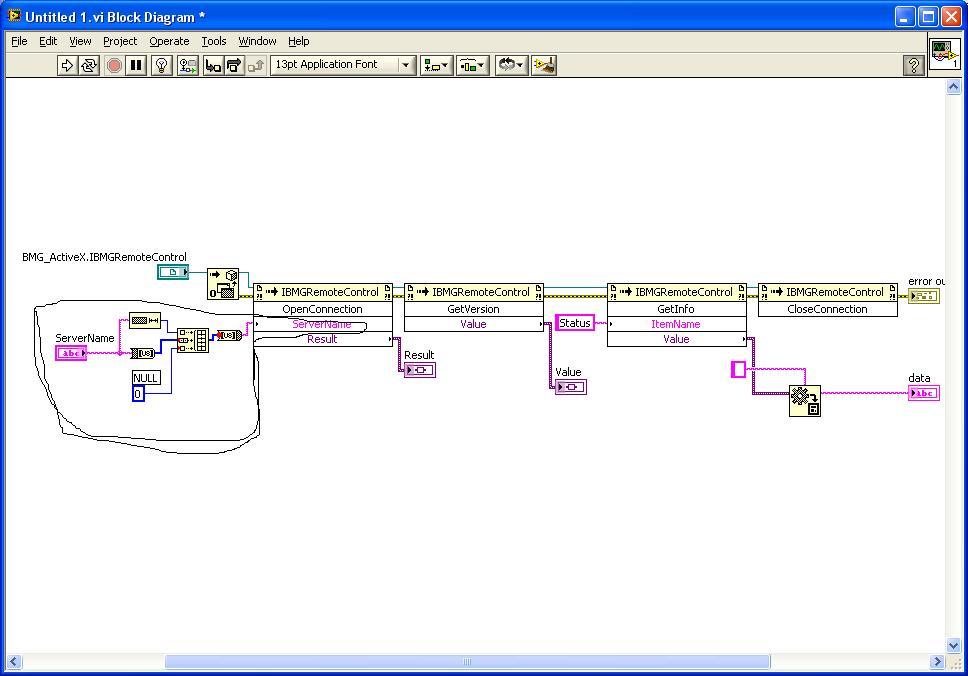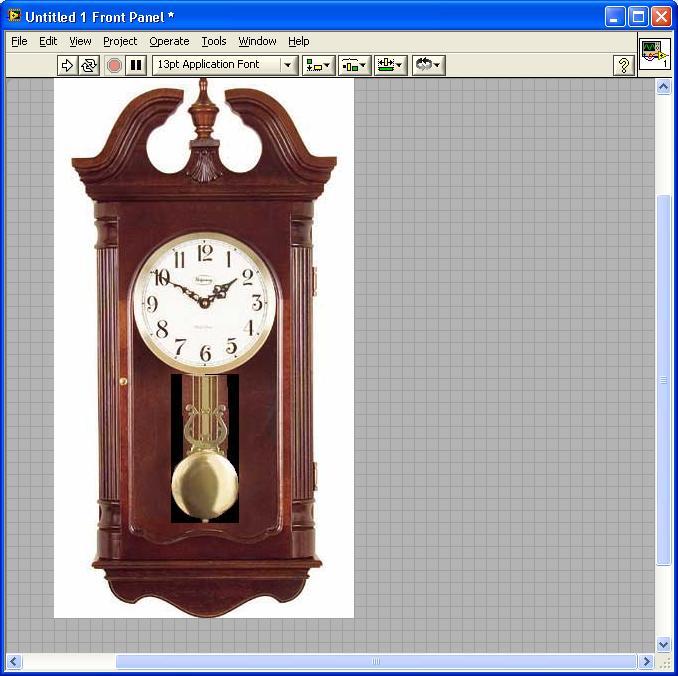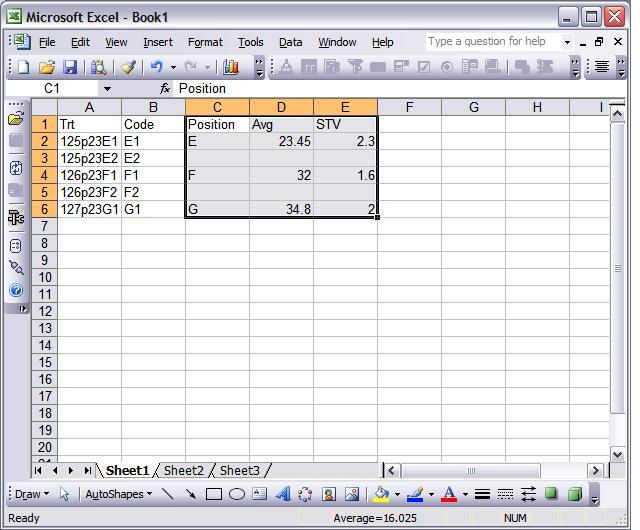
menghuihantang
Members-
Posts
59 -
Joined
-
Last visited
-
Days Won
1
Content Type
Profiles
Forums
Downloads
Gallery
Everything posted by menghuihantang
-
Antoine, I actually tried your code, but I did not figure out how to capture the new message from your package. In Skype4COM, there is a 'Message' interface which can return the message info, such as the sender info, message status, etc. But the problem is it returns all the messages sent by any specific sender. I have to manually go through each message and mark it 'read' so I can tell if any new message is received. A little complicated. Don't know if that's the correct way to do it. Can you help?
-
Manufacture provides an ActiveX control to use in LabVIEW. One function "OpenConnection (ServerName: PChar; out Result: OleVariant) requires a Pascal PChar type; when accessed from LabVIEW, it is converted to String type. I tried to wire a normal LabVIEW string, it returned an error saying the ActiveX Server is not installed or registered. I manually registered the server, but it still returns the same error. I tried to convert the LabVIEW string to a Pascal type, like shown in the picture (put the string length in the beginning and a NULL in the end to make it a null-terminated string), still the same error. My guess is that the problem still lies in the string, it is not compatible with the Pascal type. But how can I convert the string in this case?
-
A quick question. Now that new computers are upgraded to 64-bit, so it makes sense to take the advantage of 64-bit of LV too; in the mean time, we are still using other 32-bit computers and LV. So Can we program the same VI in both 64-bit and 32-bit LV? I hope we can so that we can go ahead and install 64-bit.
-
DOES THIS MAKE SENSE TO ANYONE? Hi Jim77215 Yes it can by using C files that can be called bay 'call funcrion library node'. Write a C function and handle the parameters like calling a dll in windows. You dont have to reference a specific dll. Just write C:\ in the path window of the 'call funcrion library node' configuration menue. Add the function name and the function parameters. Press OK. Connect all the funcion inputs and outputs to the node and save the VI. When you load the VI, LV will search for the VI. You can simply say ignore item or abort it the file dialog apears. Add the C file to your LV PDA project. Add the C file to your build settings as a additional file. Build your application. Thats it. We have implemented DIO, A/D, CAN and other functions to our project this way. With kind regards Martin Kunze KDI Digital Instrumentation.com e-mail: martin.kunze@digital-instrumentation.com Tel: +49 (0)441 9490852
-
I finally called NI Application Engineer for help. The answer is pretty --- awkward. I was told that NI Mobil Module supports WINDOWS MOBILE OS, but very often has issue with WINDOW CE OS. So a better solution is to switch to Windows Mobile. However, it is not impossible to make it work with CE. How? No Clue.
-
OK, I know this is a topic talked over and over both here and ni.com/forums, but I still cannot figure out how to run the application on my Motorola MC1000. http://forums.ni.com...uireLogin=False this post suggests that some DLL files might be missing, such as commctrl.dll commdlg.dll COREDLL.dll ole32.dll WINSOCK.dll WS2.dll So need to install Window CE SDK. I tried this path, downloaded the CE 5.0 SDK, but how to install the package into my MC1000. I copied the Microsoft Pocket PC 2003 SDK intaller package, but cannot run the installation, says requiring another application to run the installer. So now the question is how I install a program in a PDA. I have LabVIEW 2009 and Mobile Module 2009, and a Motorola running on Window CE5.0. PDA is totally a new territory, so I hope anyone who has gone through this would share some thoughts here. Thanks.
-
Programmatically create separate windows
menghuihantang replied to menghuihantang's topic in User Interface
Sorry, but can you explain a little bit how you made the note.vi movable? It seems like something about register user event, but I cannot figure out how to implement it. Thanks again. -
Programmatically create separate windows
menghuihantang replied to menghuihantang's topic in User Interface
me too. I always want to make a clock-interface. Can you share the code when you finish? I don't know how to make the needles do a circular motion, unless the controls on the front panel have a angle property to modify. But they don't. -
Programmatically create separate windows
menghuihantang replied to menghuihantang's topic in User Interface
You even made a video to demonstrate. Thanks so much. That helps totally. BY the way, is that clock running in LV too? Can you share the code? -
Can a VI create a new window programmatically, a new window which can float around anywhere? I am trying to finish a little program which can post a note on the monitor, an easy way to record some ideas. Each note is in a separate new window, and can be updated or deleted. (Yes, the program is available for free download somewhere online, but I wish to have a LV version). Maybe this is not a User Interface problem. It's more like a OOP, treating each note an object of the Class NOTE, and .....
-
Trying to make a clock interface. In the image, the Pendulum and clock needles are controls. I try to make the Pendulum move as a real clock, but how to rotate the control. I can move its position from right to left, but doesn't seem like a clock anymore. So can I rotate the angle of a control? A control doesn't have a property about its own angle.
-
trying to generate chart in Excel. One thing I cannot figour out is how to select data range when they are not continued on a worksheet . For example, in the attached image, the data source is D2:E2, D4:E4, D6:E6, but the range function only accpets one pair. Any idea? Anothing thing, how to add a title for the graph?
-
See the attached pic. A lot of people agreed that correct answer is B. I am so confused. How is it possible B is correct?? I think is C. Whoever thinks B is the one, can you explain a little to me. Thanks.
-
Calling other VIs to execution
menghuihantang replied to Pollux's topic in Application Design & Architecture
why bother to use event structure? a simple case structure in a while loop should do as good, if not better, in this case -
As some experienced programmers said, touchscreen is a dead end. So anybody ever tried Pen Tablet for programming. I am not trying to replace mouse, I am just looking for another option besides mouse programming which likely can reduce the wrist hurt. Pen Tablet is widely used for Art Design. Anybody here is using it for LabVIEW programming?
-
QUOTE (Daklu @ Mar 24 2009, 01:38 PM) Monority Report is just a movie. People like to put their imagination into a movie. So I would say one day from now, some day you can only find a mouse in some country museums. Don't know when though, mouse is a amazing device, like you said. I don't know much about eye tracking. But are you sure it is less challenging than touchscreen. Yes, fingers are inaccurate than a little mouse. But nobody ever said we can only use fingers. How about laser beams? I am no expert at all and it's totally stupid imagination. But the coolness factor has always been one of the best motivations. Think about the life around you, all we try to do is to build something cool and make that coolness last for ever. Ok, maybe it's not time yet, but that's not a good reason to stop pursuing.
-
QUOTE (jdunham @ Mar 24 2009, 11:27 AM) It might not be faster, depend on individual styles. But it can probably reduce the wrist pain caused by using mouse,right? I dont know you guys, but my wrist hurt and that's why I brought about this interesting topic. QUOTE (neBulus @ Mar 24 2009, 09:08 AM) As I posted in this thread, what will really make a difference is an "eye Tracker". Maybe the next generation after me will go for the brain plug vesion. Ben That's great demo. It's better than what I thought. I am only thinking about 2-D. 3-D is definitely better, but probably takes more time for practical usage.
-
QUOTE (jdunham @ Mar 24 2009, 10:31 AM) I don't see why it's impossible to make fine motion on touchscreen. Don't consider touchsreen purely finger-pad. You will have, for instance, a button which functions as a fine motion control. By clicking multiple times, you will have the pixel-by-pixel motion if you want. You can also have a keyboard on the touchscreen just like a real physical one. How about that? You will find out your programming speed is much much faster and more fun.
-
QUOTE (neBulus @ Mar 24 2009, 08:51 AM) Well, I am not saying to eliminate keyboard and mouse, they can still be there if needed. Or even integrate mouse on the touchscreen. I agree with you that a lot of stuffs are not ready yet, but I think it is possible starting to pursue it now. This will be a good push to spread LabVIEW, don't you think?
-
LabVIEW is a graphic programming language which basically avoids text-typing. I wonder if touchscreen programming for LabVIEW is available. I mean it makes the best use of graphic language and much fun, like in the scientific fictions. That will be so cool.
-
Acquiring images with usb camera
menghuihantang replied to n00bzor's topic in Machine Vision and Imaging
QUOTE (n00bzor @ Mar 20 2009, 06:07 AM) I have the same problem too. I use the Microsoft LifeCam. But not as bad as 1 in 100, it returns a black image maybe once every 200 so. I don't know if it is a synchronising problem, but it is definitely related to the webcam settings. It seemed to me that every time the webcam snaps an image, it auto-adjusts itself for the environmental light and very likely it returns an error at this point. So I turned off its auto-white-balance and reset up other parameters like saturation, contrast. This helps a lot, but I don't know if it can help you. Just in any case the webcam still returns a black image, I put a while loop around image snap routine which only stops after an non-black image is captured. -
QUOTE (liupingnuaa @ Mar 16 2009, 04:08 AM) You need to be a little specific, like show your code and then ask your questions.





